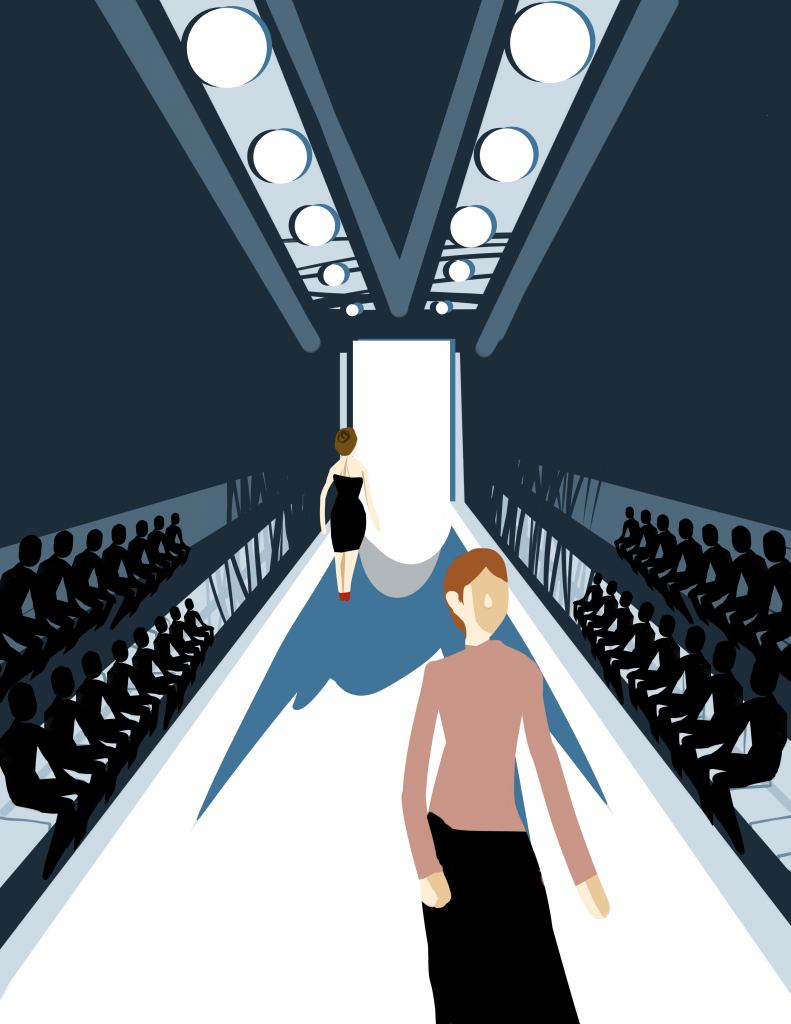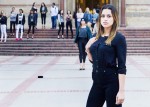Twelve fashion collections range from clean cut lines to cloth drapery to oversized pajamas and are influenced by ancient China, the modern punk scene and everything else in between.
Together, they are the definition of eclectic, said Vita Newstetter, a third-year Design | Media Arts student.
UCLA’s Fashion and Student Trends organization is holding its annual spring runway show Friday in Ackerman Grand Ballroom. The show is orchestrated by students, with Bruins making and modeling the clothing lines. Because of the increased creative freedom this year, designers can pick from a variety of materials, color palettes, shapes and sizes to create their look.
The executive directors brought in less-experienced designers than in previous shows, design director Newstetter said. The diverse team’s artistic perspectives result in an array of contrasting runway looks, she said. One artist made all of her clothing out of recycled materials and another used all neoprene to create an athleisure line.
Newstetter added that she used her position to bring less rules and more variety and freedom to the stage. She wants to include experienced designers, as well as people who have never touched a sewing machine or don’t want to sew at all.
“I kept telling the designers when they signed up, ‘Don’t be scared to sign up for this new thing that you’ve never done before – if you end up putting all the models down in trash bags that’s fine,'” Newstetter said. “It’s about the fact that we’re in college, it’s not a job, you’re not getting paid. It’s just a free space to try something new.”
FAST’s board of student executive directors have worked together since fall quarter to secure venues and vendors, prepare the designers and coach models.
Model director Kathleen Knight worked with the student models at weekly practices in Royce Hall, where they worked on walking technique, ending choreography and runway etiquette. They are a vital part of the show, she said, but their primary job is to highlight the student designs.
“You have to be able to appropriately express your emotions and appropriately display the clothes that you’re wearing,” said Knight, a second-year environmental science student.
The 16 student designers worked on the collections since the beginning of the school year, some in collaboration, to create various lines of six to 12 looks each.
Connor Warnick, a designer in this year’s show, said he has never sewn before. While he sees some of his peers basing their designs off high-end fashion, he is trying to capture a concept instead. His line aims to clothe the wearer in something that will create confidence and battle insecurities. Warnick saw the show as an opportunity to make clothes and be creative, said the second-year Design | Media Arts student.
Warnick described his collection as relaxing and empowering, made like sleepwear for comfort. The line, called Orion, will feature his own artwork and photography on the clothing.
The idea of freeing the artists of time constraints and themes was implemented to expand the variety of pieces presented at the show. Knight said the executive directors approached the show from a minimalist perspective in order to let the designs dictate the theme.
“Everybody has a different outtake on what fashion is, everybody has a different idea as to what their design art means to them,” she said.
With any further restraints, an individual’s style would not be as easily expressed, said Blanka Nakova, a designer and second-year economics student. Her clothing line will consist of elevated street wear and elegant evening wear in neutral tones.
Yu Xie, a graduate student, said she liked using her own fabrics and materials instead of having limitations on what she could create. Xie brought her own materials from her home in China to add to the ancient Chinese style and concept of her line.
The lack of deadlines and monitoring on the executive board’s part has allowed her to work amid her hectic schedule of schoolwork. She said most of her designing and bringing her project to life was done on the weekends.
“I like the freedom because I can do things according to my plan,” said Xie.
Removing frameworks of expectations allows the artists to create a more eclectic group of designs, Newstetter said.
“The great thing about FAST is that there aren’t any particular rules or expectations,” she said. “It gives (students) an excuse to push past what they’d be doing in school, and make a project for themselves on their own without any sort of guidance or constraints.”

